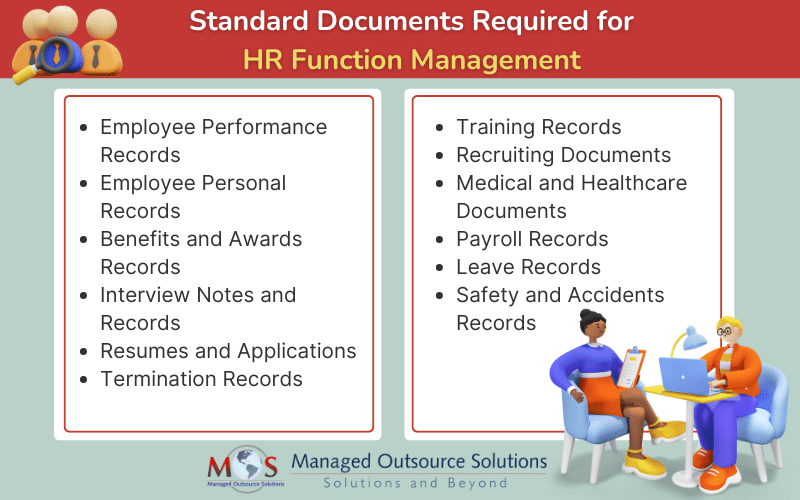Every company, irrespective of its size, has some HR functions to perform. Human resource management can provide strategic advantage if the department has the potential to handle all its activities efficiently and effectively. However, controlling the tons of paperwork that goes along HR management can be challenging. Having an effective HR document management plan lowers risk for your company, improves administrative effectiveness, and safeguards sensitive data. Additionally, it provides robust data to your leadership teams so they can make better decisions. Using document scanning services to digitize paper documents makes it possible to store each employee’s personal information in an electronic repository for long-term maintenance and traceability.
Steps in an Effective HR Document Management Plan
- Make a list of the HR documents: Make a list of every document related to human resources that your company has.
Scanning documents is the first step involved in managing paper based employee records and HR documents. Many firms consider document scanning as a time-consuming and cumbersome process, even though they have adequate tools and techniques to accomplish the task. Employees have to devote a lot of time for document capture and scanning, thereby reducing their time to carry out core activities.
- Arrange the documents systematically: The HR filing system needs to be organized for handling a large number of files efficiently. Sorting the files into folders and sub-folders inside of each employee folder is one of the easiest ways to do this. Index the files and assign uniform, descriptive file names in order to make finding documents easier. This can save the time and hassles of searching for and accessing information when it’s needed.
- Determine your access requirements: When generating or gathering any HR document, it is essential to determine the access requirements. Consider who needs access to the file—whether it is every employee, supervisors, or HR personnel. Assess how frequently and when they will need access, and establish the method by which they will obtain it. Put security access in place to limit access to people who are permitted only. To keep track of employee access and activity on electronic HR documents, set up a tracking system.
- Establish goals and requirements for retention: Whether it is for paper or electronic information, the HR team should incorporate a retention procedure into their records management plan. It is hard to manage employee papers effectively and compliantly without a document retention policy in place. Most businesses frequently keep HR records on file for legal or auditing concerns. For example, following termination, personnel records must be kept for a year. Those records can be disposed of after a year. The record retention policy limits the quantity of dormant records kept in the HR document management system with the goal of lowering potential risk, such as legal, compliance, or security issues.
- Provide training: Your employees must be able to utilize and navigate your new digital HR document management software quickly and effectively for it to be beneficial to you. As a result, you ought to provide some specialized instructions on utilizing the new digital workflow. This is particularly helpful in cases where your HR personnel is accustomed to manual rather than digital procedures.
- Mobile access of HR information: With the growth of the remote and hybrid work culture, having access to HR documentation at all times and from any location is essential. Employees are increasingly accessing payroll, benefits, and other employment information on mobile devices. HR departments in a broad variety of sectors are adopting mobile access to function as seamlessly and effectively as possible.
Streamline your HR document management with our document scanning services.
Document scanning services significantly enhance HR document management by digitizing physical records, making them easier to store, access, and manage. These services help create a centralized and searchable digital archive, reducing the clutter and space requirements of paper documents. Digital documents can be securely stored and backed up, ensuring data integrity and compliance with regulatory requirements. Additionally, scanning services streamline document retrieval, allowing HR personnel to quickly find and share documents, improving efficiency and productivity.





